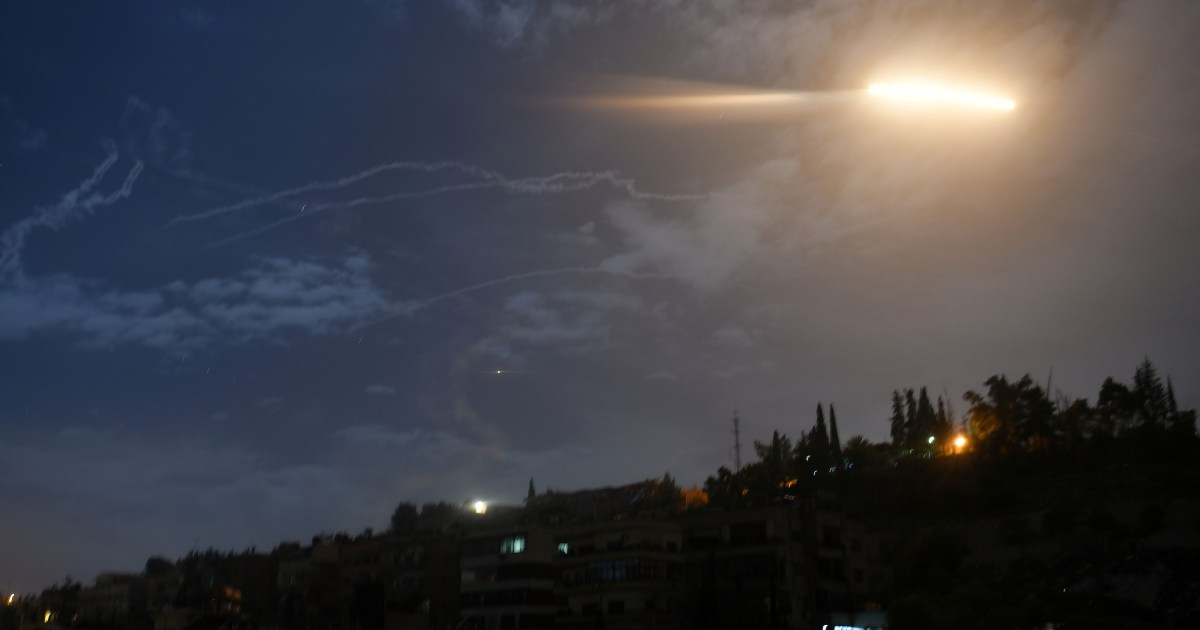Investigation finds Syria doubtless behind 2018 chlorine assault
The world chemical weapons watchdog has “affordable grounds to consider” that Syria’s air power dropped a chlorine bomb on a residential neighbourhood within the rebel-controlled Idlib area.
The new report by the Organisation for the Prohibition of Chemical Weapons (OPCW) investigative arm stated on Monday nobody was killed when the cylinder of chlorine gasoline, delivered in a barrel bomb, hit the al-Talil neighbourhood within the metropolis of Saraqeb in February 2018.
However, a dozen individuals had been handled for signs in step with chemical poisoning, together with nausea, eye irritation, shortness of breath, coughing and wheezing, the report stated.
“The cylinder ruptured and launched chlorine over a big space, affecting 12 named people,” the watchdog stated in a press release. Those affected all survived, it added.
There was no fast remark from the Syrian authorities on Monday.
Syria and its navy ally Russia have persistently denied utilizing chemical weapons throughout President Bashar al-Assad’s decade-old battle with insurgent forces, saying any such assaults had been staged by opponents to make Damascus appear like the perpetrator.
Chlorine is just not an internationally banned toxin, however the usage of any chemical substance in armed battle is banned beneath the 1997 Chemical Weapons Convention, the implementation of which is overseen by the OPCW watchdog based mostly in The Hague.
A crackdown on pro-democracy demonstrators by al-Assad in 2011 mushroomed into civil struggle, with Russia and Iran supporting his authorities and the United States, Turkey, and a few Arab adversaries of Damascus backing a number of the many insurgent teams.
Table of Contents
Previous findings
As a part of the investigation, consultants interviewed witnesses, analysed samples and remnants collected from the city, reviewed signs reported by casualties and studied satellite tv for pc imagery and modelled gasoline dispersion patterns.
The OPCW can not maintain people criminally answerable for assaults. The report can be shared with the organisation’s member states and the United Nations.
In April 2020, the OPCW’s Investigation and Identification Team (IIT) concluded that Syrian warplanes and a helicopter dropped bombs containing chlorine and sarin nerve gasoline on a village in Syria’s Hama area in March 2017.
The newest report by the IIT additionally implicated Syrian authorities forces. It concluded “there have been affordable grounds to consider that no less than one cylinder crammed with chlorine was dropped from a helicopter of the Syrian Arab Air Forces, belonging to the Tiger Forces”.
The Tiger Forces are an elite Syrian navy unit usually utilized in offensive operations within the struggle, which has largely subsided after al-Assad wrested again most territory with essential Russian and Iranian help.
“All parts indicated the presence of Tiger Forces within the neighborhood of Saraqeb. They discovered {that a} helicopter was simply flying above the bombed space for the time being of the gasoline launch,” a abstract of the OPCW report stated.
It stated samples collected from the scene had been examined and different potential technique of chlorine contamination thought of, however the OPCW crew stated nothing was discovered to point the incident was staged by al-Assad’s adversaries.
The crew recognized people believed to be concerned within the alleged assault however didn’t launch names.
Between 2015 and 2017, a joint United Nations-OPCW crew often called the Joint Investigative Mechanism (JIM) discovered that Syrian authorities troops used the nerve agent sarin and chlorine barrel bombs on a number of events, whereas ISIL (ISIS) fighters had been discovered to have used mustard gasoline.






